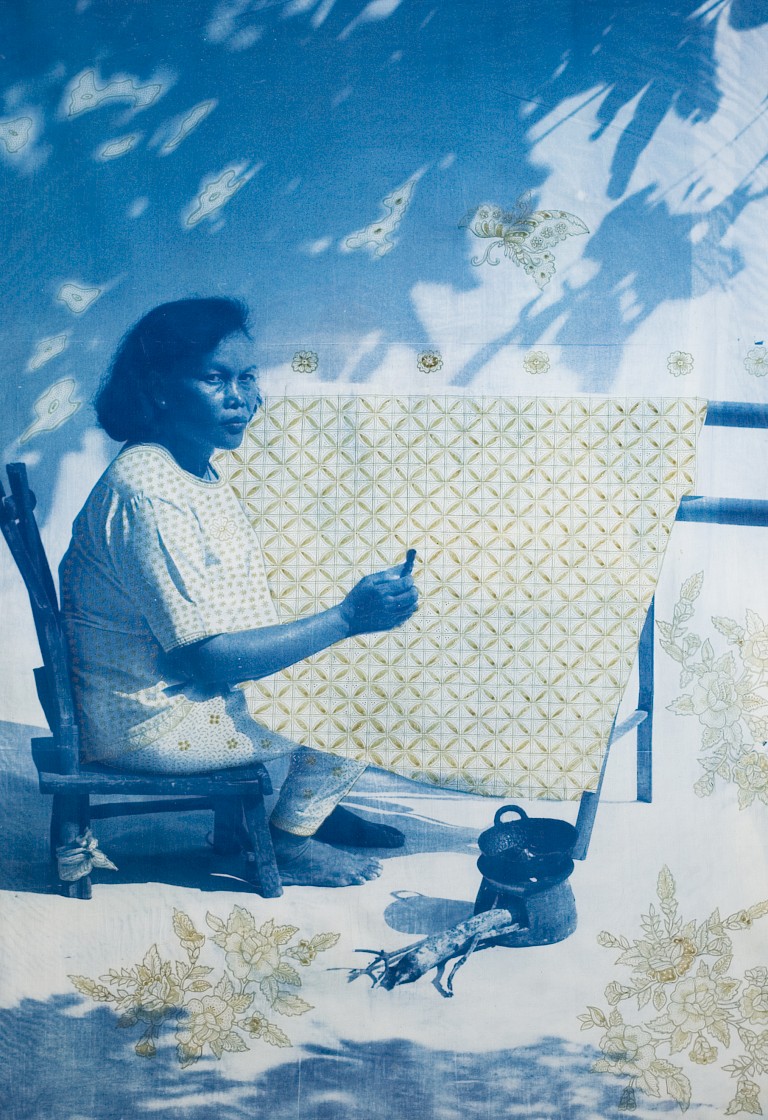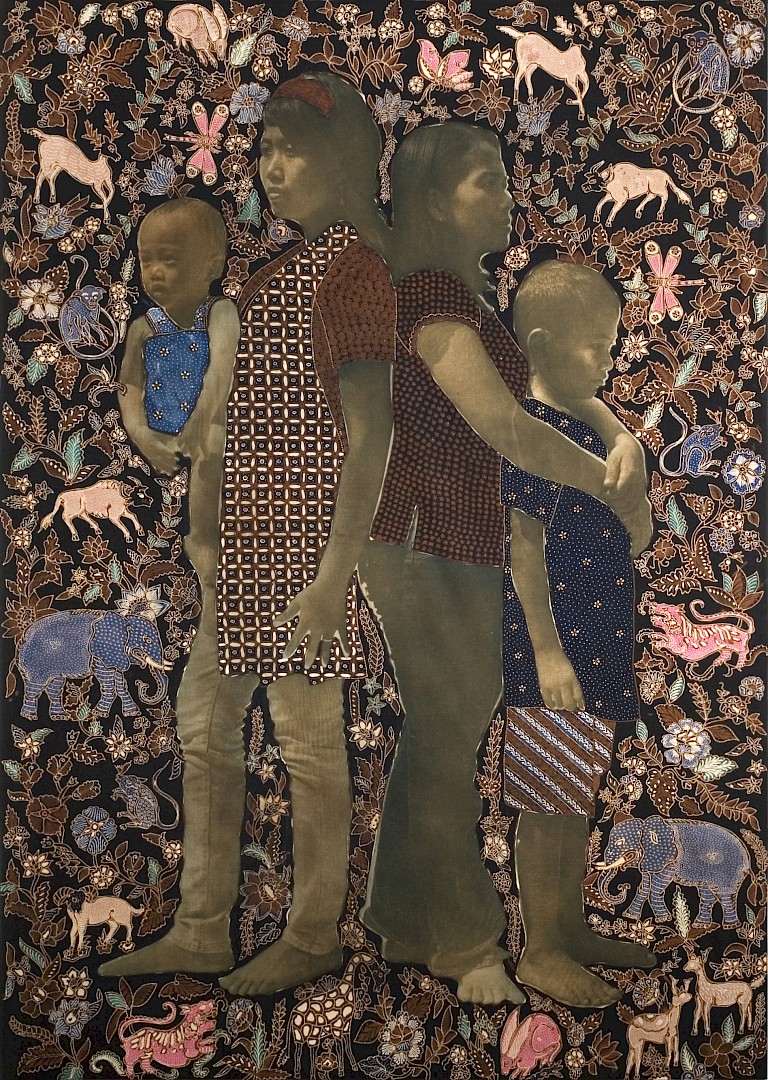



The project began in 2011, when Mintio was an artist of residency at Ruang MES 56. During her stays in Yogjakarta, she noticed that the presence of batik textile was all round the places in Yogyakarta; however she began to drawn her intention to observe batik workshops at Bayat village, outside Yogyakarta, which also famous for its natural dye colour processing method.
Earlier of the collaboration process, both artists made an attempt to approach the owner of Batik Wahyu Putro workshop. They had explain their collaboration process objectives to create an experimental customised batik pieces that combines batik method and photography. To begin the project, they invited the communities to participate in open space studio photo session. To create that combination method they had considered to use digital printing, but unfortunately such technology were not available at that time. Therefore they had to use other method which is cyanotype, a new method that they began to learn within the collaboration process.
Since the experimentation require a long time process, both artists visited and asked each community members for their willingness and commitment to get engaged with the whole experimentation process. During the process, both artists had learnt that one of the Javanese cultural method of approaching people is through the openness about their personal life. This type of approach has influenced many decision making within the production process such as photo and batik motif selection. It can be said that the process is organic and mostly based on the batik makers shared stories, which allows an exchange idea and possibilities of new aesthetic value emerge. Both artists were more in the position of facilitator which have to adapt and innovate, rather than in the controlling position of the process and the outcome. One of their objective is to place the batik makers as the subject of the work, in align with their batik motif creation. This is consider to be radical approach as oppose to the conventions of traditional batik. Moreover, each artwork shown different process of batik making as it is also related with each role of the batik makers involved in the making process. It is also tells and reflects personal stories of each batik makers even a tribute to their dedication towards preserving the Indonesian textile heritage.
The Wax on Our Finger is a collaborative visual project between Singapore photographer Samantha Tio (Mintio), Indonesian contemporary artist Budi Agung Kuswara (Kabul), and batik makers from the village of Kebon Indah, Central Java, Indonesia. This collaborative project is able to connect tradition art that represent the past with contemporary art from the present. Through this project, both artists were able to putting forward the insignificant value yet holds crucial part to become important on the artworks. This value refers to the batik maker’s figure that previously anonymous and now presented in the fabric that they made themselves. While creating the batik piece, both artists were also exploring the figure of these batik makers as a culture creator through their daily life role as part of the village community. Behind these batik making process there is another issue that threatening the sustainability of fine batik making in terms of human resources. Over the years, there were less young generation that took interest in batik making; this situation occur as a result of complicated relations between batik workers and chain distributors that place the batik workers at the lowest ranks of production cycle with below standard payment per day. However, since the project collaboration ends, it has been reported there is an increasing numbers of young generations applying for batik school. Hence it has shown that their project were successfully appeared to be appealing in the eyes of younger generations upon traditional art.
The project started in 2011, when Mintio taking part of residency programme at Ruang MES 56, Yogyakarta for 6 months to create experimental base photography works. During her observation, Mintio notice that batik work can easily be found in every corner of Yogyakarta. Her interest developed when she and Kabul, her residency collaborator, searching for batik workshop that still using traditional method which is fine batik and natural dye colour process as oppose to print batik and chemical colours.
They later found a workshop outside of Yogyakarta at Kebon Indah village at Bayat area. There they met Batik Wahyu Putro workshop owner, Ibu Suminah and Pak Sukardi to be introduced about their collaborative project concept. The participants selection method were done naturally as it is depends on the batik makers commitment, willingness and trust from the batik makers to take part in the process without knowing the outcome result. The project were finally exhibited on April 2012 in Yogyakarta and as first experience for the batik makers to see their final works with all the batik makers invited as the guest of honour. At the beginning, the project were self-funded by both artists with the support from Indonesia Contemporary Art Network and Ruang MES 56 to hold the exhibition in Yogyakarta. Later all works were exhibited for the second time at NUS Museum, Singapore; afterward all works were collected by NUS Museum by the donations from Ms. Agnes Tan.
All copyright belongs to Shanghai Academy of Fine Arts, Shanghai University.



